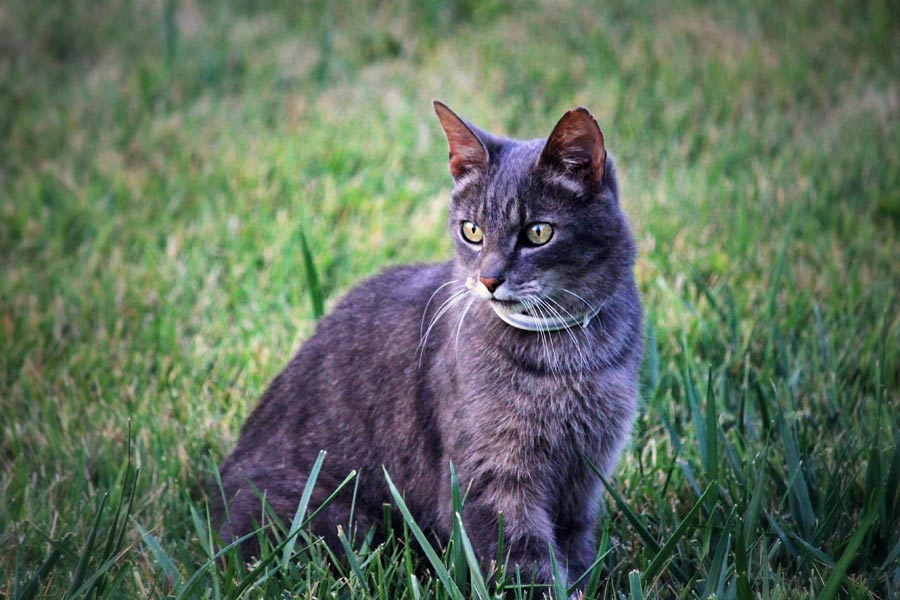Given that cats are not a natural host for heartworm, their risk is fairly low. However, because heartworm is trickier to detect in cats compared to dogs, prevention is still important.
Similar to malaria, heartworm is spread by mosquitoes. In the case of dogs, the dog is infected with heartworm larvae (microfilaria), which remains in the tissue for a few days before travelling to the heart to mature. Over a period of approximately six months, the microfilaria continues to develop. As they mature they impact the free flow of blood between the dog’s heart and lungs, causing serious damage.
However, things are very different in cats. According to Vet Voice, cats that are bitten by an infected mosquito typically suffer from a short, self-limiting infection. This is because a cat’s immune system is effective at killing the microfilaria before they mature.
Despite the self-limiting nature of the infection, it can cause an allergic response that damages the lungs. What’s more, the way a cat reacts to heartworm makes it more difficult to diagnose. It can often be mistaken for feline asthma or another type of respiratory condition.
As such, in popular heartworm regions of Australia, if a cat displays signs of feline asthma it may be worthwhile testing for heartworm.
Symptoms of heartworm in cats
Heartworm was once considered endemic to South Australia; it’s now believed that this is not the case. In fact, heartworm is known to be more prevalent in tropical states with warmer climates. However, any pet owner who lives in an area that has a high population of mosquitoes should be aware of heartworm and the signs to watch for.
Certainly, the self-limiting nature of heartworm in cats means that in many cases the infection will disappear, thanks to the cat’s immune response. Yet, in other cases, the infection can progress.
According to Cornell Feline Health Centre, ‘The most common clinical signs of heartworm infection include: intermittent vomiting (sometimes of blood as well as of food); diarrhoea; rapid and difficult breathing, coughing and gagging, all of which may be mistaken for feline asthma or some other bronchial disease; loss of appetite; lethargy and weight loss.
Preventing heartworm in cats
Unfortunately, while there is treatment available for heartworm in dogs (even though it’s expensive) there are no treatments for cats.
Therefore, just like for heartworm in dogs, the key is to provide annual protection against heartworm by administering preventative medication.
Again, there’s a disparity between what preventative treatment is available; there are around a dozen preventative medications for canine heartworm and just three for cats.
- Millbemax—the only monthly heartworm + worming treatment for cats.
- Advocate—a monthly treatment to prevent fleas + heartworm + worms
- Revolution—an alternative to Advocate, offering monthly protection against fleas, heartworm and worms.
It’s important for pet professionals to educate cat owners on the various health concerns that felines face. Without this knowledge, they can’t put the appropriate protective measures in place.
Have you encountered a cat with heartworm? What was the outcome?
Related posts
Information sources
Vet Voice. Heartworm disease. April, 2019. Accessed online Sept 2020.
Cornell Feline Health Centre. Cornell University. Heartworm in cats. Accessed online Sept, 2020.
Latest posts by Liz Walden (see all)
- Pet health: Medicinal cannabis for pets - December 27, 2021
- What pet business insurance do I need? - November 17, 2021
- Pet sitters: how to take time off - November 15, 2021










Leave A Comment